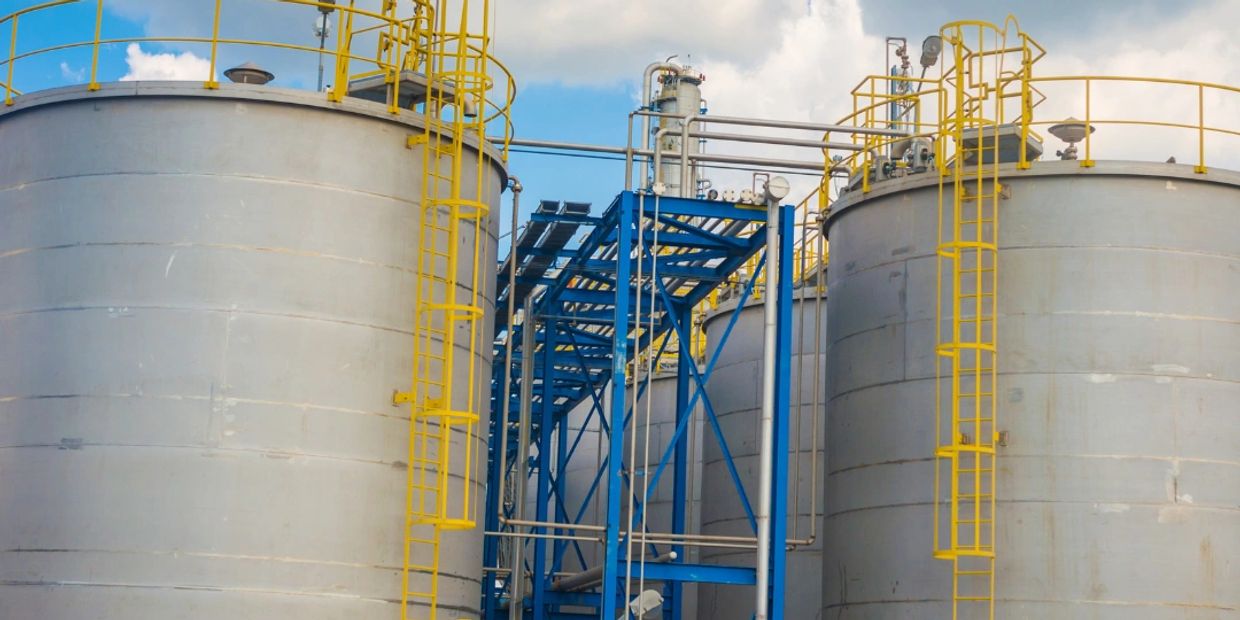The Vital Function of Storage Tank Welding Examination in Ensuring Structural Integrity and Security Conformity in Industrial Applications
In the world of commercial applications, container welding assessment arises as an essential aspect in guarding architectural stability and guaranteeing conformity with safety and security laws. Utilizing a combination of techniques such as aesthetic assessments and advanced screening approaches, these examinations offer to recognize and reduce prospective flaws prior to they intensify right into considerable hazards.
Significance of Storage Tank Welding Inspection

Making sure conformity with market criteria and guidelines is one more significant element of tank welding assessment. Regulatory bodies mandate rigorous standards for the construction and upkeep of storage space containers, and extensive assessments assist organizations stick to these demands. Non-compliance can cause serious fines, including fines and shutdowns, additionally emphasizing the requirement for rigorous examination procedures.
Furthermore, container welding examination plays a vital role in maintaining functional performance. Normal evaluations can identify possible issues before they escalate, assisting in timely repair services and minimizing downtime. This proactive technique not just boosts safety but likewise adds to cost savings in the long run. In recap, the relevance of container welding evaluation lies in its capability to protect public health and wellness, shield the environment, and make certain compliance with regulative structures.
Key Examination Techniques
Efficient container welding assessment depends on a range of vital techniques that make certain extensive analysis of weld top quality and architectural honesty. Among the most common strategies are aesthetic assessment, ultrasonic testing, radiographic testing, and magnetic particle screening - Tank Welding Inspection. Each approach provides distinct benefits in analyzing different aspects of the weld
Aesthetic assessment functions as the initial line of protection, enabling inspectors to recognize surface flaws, irregularities, or inconsistencies in the weld grain. Ultrasonic testing employs high-frequency acoustic waves to identify inner problems, such as fractures or gaps, supplying a detailed analysis of weld stability. This approach is specifically reliable in spotting concerns that might not show up externally.
Radiographic testing makes use of X-rays or gamma rays to produce pictures of the welds, disclosing interior stoppages and offering an irreversible document for future referral. This method is extremely effective for important applications where the threat of failure have to be minimized.
Finally, magnetic particle testing is used to recognize surface and near-surface problems in ferromagnetic products. By using electromagnetic fields and fine iron fragments, assessors can pinpoint interruptions that could compromise the structural stability of the container. With each other, these methods develop a durable framework for making sure premium welds in commercial applications.
Compliance With Safety And Security Requirements

Normal assessments play a pivotal function in ensuring conformity by identifying prospective failings or variances from prescribed criteria. Examiners are trained to examine weld high quality, verify product specifications, and evaluate the total architectural honesty of containers. Their expertise is essential in making sure that welding processes satisfy the needed safety criteria.
Additionally, compliance with security criteria not only safeguards employees yet additionally safeguards the environment from potential dangers such as leaks or catastrophic failures. Organizations that prioritize safety and security compliance are better placed to reduce dangers, improve operational performance, and cultivate a society of safety within their labor force. In summary, maintaining strenuous compliance with safety standards is crucial for the successful operation of storage tank welding tasks in industrial settings.
Advantages of Routine Assessments
Regular examinations are indispensable to maintaining the structural integrity and security of welded storage tanks. These assessments supply an organized technique to identifying possible flaws or weaknesses in the welds, guaranteeing that any problems are addressed before they escalate into considerable failings. By performing routine evaluations, companies can detect corrosion, fatigue, and various other types of deterioration that might jeopardize tank performance.
In addition, consistent examinations add to conformity with industry policies and requirements. Sticking to have a peek here these standards not only reduces legal dangers however likewise boosts the organization's credibility for safety and reliability. Regular inspections cultivate a positive safety and security society, encouraging employees to identify and focus on the value of equipment integrity.

Situation Research Studies and Real-World Applications
Study and real-world applications illustrate the substantial effect of efficient container welding assessment techniques. home One remarkable instance is a huge petrochemical facility that faced considerable operational interruptions because of leaks in tank. Complying with the implementation of extensive welding inspection methods, including visual and ultrasonic screening, the facility recognized critical problems in weld seams that could have led to devastating failings. This positive strategy not just protected against ecological threats yet also conserved the company millions in prospective clean-up prices and regulative fines.
Likewise, a water therapy plant carried out a detailed assessment program for its storage tank welding procedures - Tank Welding Inspection. By incorporating non-destructive screening methods, the plant was able to detect very early indicators of rust and exhaustion in weld joints. This timely treatment expanded the lifespan of the tanks and made certain conformity with safety and security guidelines, hence guarding public health
These instance research studies emphasize the value of routine and organized container welding assessments. By focusing on these practices, industries can reduce threats, boost architectural stability, and ensure conformity with safety standards, inevitably resulting in improved functional efficiency and reduced liabilities.

Verdict
To conclude, container welding evaluation is a crucial component of keeping structural stability and safety and security in industrial applications. Employing various inspection techniques makes sure very early discovery of prospective defects, consequently stopping devastating failings. Adherence to safety and security requirements better improves operational integrity and conformity with regulative requirements. Ultimately, regular inspections not just shield public health and the environment yet likewise add to the long life and performance of essential properties, emphasizing the essential role home of this technique in industrial operations.